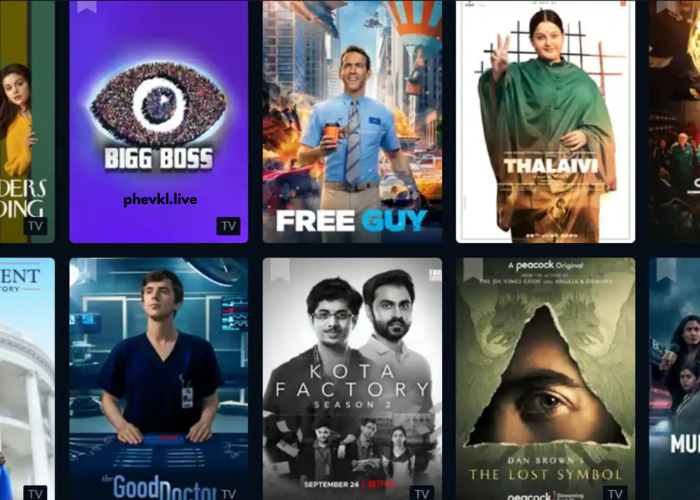
In today’s fast-paced digital world, entrepreneurship has evolved beyond traditional frameworks. Modern entrepreneurs face a unique set of challenges and opportunities that require innovative thinking, agile adaptation, and a proven business strategy to succeed. Whether you’re launching a startup, managing a growing enterprise, or scaling an established brand, having a clearly defined, adaptable strategy is essential.
This comprehensive guide explores proven business strategies that are crucial for modern entrepreneurs to thrive in competitive markets. It covers aspects ranging from planning and branding to growth hacking and sustainability, all with a focus on real-world applicability and long-term success.
The Foundation of a Proven Business Strategy
Understanding Your Vision and Mission
Every successful business starts with a clear vision and mission. These statements guide your objectives, define your purpose, and align your team toward common goals. Your vision describes what you ultimately want to achieve, while your mission explains how you intend to get there.
Example:
-
Vision: To revolutionize how small businesses access digital tools.
-
Mission: To provide affordable, easy-to-use software solutions for small enterprises.
Market Research: Know Your Audience
One of the most overlooked yet essential steps is conducting in-depth market research. Understanding your target audience, their pain points, behavior, preferences, and spending habits can drastically improve your product development and marketing strategy.
Key research areas include:
-
Demographic profiling
-
Psychographics and buying behavior
-
Market trends and demands
-
Competitor analysis
Defining Your Unique Value Proposition (UVP)
Your UVP answers the customer’s question: “Why should I choose you over your competitors?” This is the core differentiator that separates your business in a crowded marketplace.
A compelling UVP is:
-
Clear and concise
-
Benefits-focused
-
Aligned with your target audience’s needs
Strategic Planning and Execution
Setting SMART Goals
Your business goals should be Specific, Measurable, Achievable, Relevant, and Time-bound (SMART). This approach keeps your objectives actionable and trackable, enabling continuous performance monitoring.
Example:
-
Grow website traffic by 30% in the next 6 months through content marketing.
Creating a Business Model Canvas
Modern entrepreneurs often use tools like the Business Model Canvas to map out their strategy on one page. It includes nine key building blocks such as:
-
Customer segments
-
Value propositions
-
Channels
-
Revenue streams
-
Cost structure
This visual framework encourages innovation and clarity from the early stages.
Leveraging Lean Startup Principles
The Lean Startup methodology emphasizes creating a Minimum Viable Product (MVP) and using customer feedback to iterate rapidly. This prevents over-investing in ideas that don’t work and accelerates growth through experimentation.
Financial Strategy and Resource Management
Budgeting and Forecasting
Efficient financial planning is the backbone of every sustainable business. Modern entrepreneurs must learn to create:
-
Operating budgets
-
Cash flow forecasts
-
Break-even analyses
These help avoid cash crunches and ensure smooth scaling.
Bootstrapping vs. Fundraising
Modern entrepreneurs must decide between bootstrapping (using personal savings) or seeking external funding (like angel investors, venture capital, or crowdfunding).
Each has pros and cons:
-
Bootstrapping offers control but limited capital.
-
Fundraising can scale faster but may dilute ownership.
Building Financial Resilience
Economic downturns or market disruptions are inevitable. That’s why building financial resilience through savings, contingency funds, and diversified income streams is a smart strategy.
Branding and Online Presence
Crafting a Memorable Brand Identity
Your brand is more than your logo—it’s your promise to your customer. It includes:
-
Brand story
-
Tone of voice
-
Visual identity
-
Customer experience
Consistency across all channels builds trust and loyalty.
Developing a Strong Digital Presence
Modern businesses must exist online. This includes having:
-
A mobile-friendly website
-
SEO-optimized content
-
Active social media channels
-
An email marketing strategy
Implementing Content Marketing
Content marketing builds authority and attracts leads over time. Types of content that drive engagement include:
-
Blog posts
-
Ebooks and whitepapers
-
Webinars
-
Case studies
Regularly updating your content improves SEO and user trust.
Marketing Strategy in the Digital Age
Social Media Marketing
Social platforms offer cost-effective avenues to connect with your audience. Pick platforms that align with your business (e.g., LinkedIn for B2B, Instagram for lifestyle products).
Key tactics include:
-
Paid ads and retargeting
-
Influencer marketing
-
Community building
Email Marketing and Automation
Email remains one of the highest ROI marketing tools. Use automation platforms to:
-
Onboard new customers
-
Send promotional campaigns
-
Offer personalized content
SEO and Paid Advertising
Investing in search engine optimization (SEO) ensures long-term traffic growth. Meanwhile, PPC ads via Google or Facebook can provide quick results and valuable insights.
Combine both strategies to balance immediate and long-term growth.Customer-Centric Approach
Building Customer Relationships
Modern entrepreneurs need to nurture relationships, not just sell. Focus on customer success and retention as much as acquisition.
Strategies include:
-
Offering excellent customer support
-
Personalized user experiences
-
Feedback loops and surveys
Using CRM Tools
Customer Relationship Management (CRM) systems help track interactions, automate workflows, and optimize customer service. Popular tools include:
-
HubSpot
-
Salesforce
-
Zoho CRM
Emphasizing Customer Lifetime Value (CLTV)
Understanding CLTV helps you calculate how much you can invest in acquiring and retaining customers. A higher CLTV means more profitability over time.
Growth Hacking Techniques
Viral Loops and Referral Marketing
Encourage existing users to refer new ones by creating viral loops. Examples include:
-
“Invite a friend” incentives
-
Affiliate programs
-
Social media sharing features
Conversion Rate Optimization (CRO)
Use A/B testing and analytics to improve website and app performance. Small changes in layout, copy, or UX can lead to higher sales or sign-ups.
Strategic Partnerships
Collaborate with other businesses to expand reach without heavy spending. This could be through:
-
Co-marketing campaigns
-
Joint webinars
-
Product bundling
Technology and Innovation
Embracing Automation and AI
Modern entrepreneurs must leverage tools that automate repetitive tasks, such as:
-
Chatbots for customer service
-
Email sequences
-
Inventory and order processing
AI-driven insights can also help with personalized marketing and trend prediction.
Staying Agile and Tech-Savvy
Entrepreneurs must stay informed about emerging technologies like:
-
Blockchain
-
Augmented Reality
-
Cloud computing
Adopting the right tech at the right time gives a competitive advantage.
Leadership and Team Building
Hiring Smart and Building Culture
Your team is your biggest asset. Focus on hiring individuals aligned with your values and building a positive, inclusive culture.
Key focus areas:
-
Transparency and trust
-
Continuous learning
-
Diversity and inclusion
Delegation and Productivity Tools
Learn to delegate effectively and use tools like:
-
Trello or Asana for task management
-
Slack for communication
-
Notion for knowledge sharing
Encouraging Innovation from Within
Empower your team to suggest improvements, try new ideas, and take calculated risks. Innovation shouldn’t only come from the top.
Sustainability and Ethics
Building an Ethical Brand
Modern consumers care about how brands treat:
-
The environment
-
Their employees
-
Their communities
Make your values part of your marketing and business practices.
Going Green and Sustainable
Incorporate sustainability through:
-
Eco-friendly packaging
-
Carbon offsetting
-
Waste reduction strategies
This not only helps the planet but attracts conscious consumers.
Social Responsibility
Engaging in Corporate Social Responsibility (CSR) boosts your public image and builds long-term goodwill.
Measuring Success and Continuous Improvement
KPIs and Performance Metrics
Track Key Performance Indicators like:
-
Customer Acquisition Cost (CAC)
-
Monthly Recurring Revenue (MRR)
-
Net Promoter Score (NPS)
Use these metrics to guide decision-making.
Feedback Loops and Iteration
Gather feedback from:
-
Customers
-
Employees
-
Partners
Use it to continuously iterate and improve your products, services, and internal processes.
Staying Open to Change
Finally, be prepared to pivot when needed. The most successful modern entrepreneurs don’t just stick to a rigid plan—they adapt based on feedback and market changes.
Conclusion
A proven business strategy for modern entrepreneurs is not a one-size-fits-all formula—it’s a dynamic blueprint that combines foundational business principles with adaptability, innovation, and customer-centricity. In a rapidly evolving digital economy, the key to sustainable success lies in strategic planning, data-driven decisions, smart marketing, and ethical growth.
By implementing the strategies outlined above, entrepreneurs can confidently build scalable, resilient, and impactful businesses that stand the test of time






